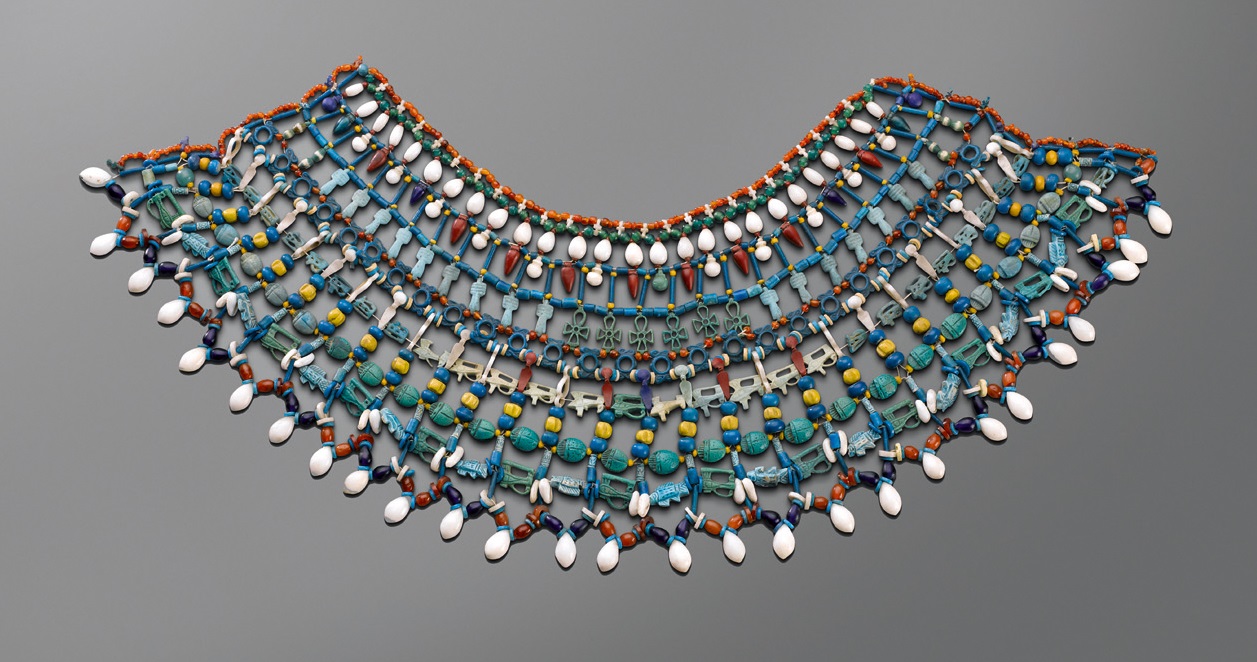The broad collar of a Queen who led the African resistance against Emperor Augustus.
To the south of Egypt, in what is now northern Sudan, lay Kush, a powerful African kingdom with its capital at Meroe.
In 24 B.C., shortly after Queen Cleopatra committed suicide and Egypt came under Roman domination, Emperor Augustus sent his troops south to meet an army led by a Kushite Queen, most likely Queen Amanishakheto.
The Roman action was in retaliation to a successful attack the Queen had launched a year earlier on the Roman forces at Aswan.
Despite putting up a brave fight, Amanishakheto's forces were driven back to Meroe and the Romans installed a garrison there to keep an eye on their troublesome neighbours. The two parties eventually agreed to a peace deal and the warrior Queen, evidently a master of diplomacy as well, won back much of their land.
In time the Queen was buried in style in a large pyramid at Meroe, given the modern designation of 'North 6'. Included in her subterranean burial chamber was a fabulous collection of jewellery, discovered in 1834 by Italian treasure hunter Giuseppe Ferlini.
Alongside the hoard of gold bracelets and rings was a magnificent broad collar in stone, faience and glass (above). The kingdom of Kush had been independent of Egypt for a thousand years when Amanishakheto faced the Romans, but was still strongly influenced by ancient Egypt's legacy. This collar is composed of a number of forms of ancient Egyptian amulets, including the ankh sign ('life'), the wedjat ('eye of Horus'), fish and scarabs.
The necklace is part of an exhibition which has been at the Neues Museum in Berlin titled 'Everyday - Luxury - Protection. Jewellery in Ancient Egypt'.
Photo: Stefan Buchner
